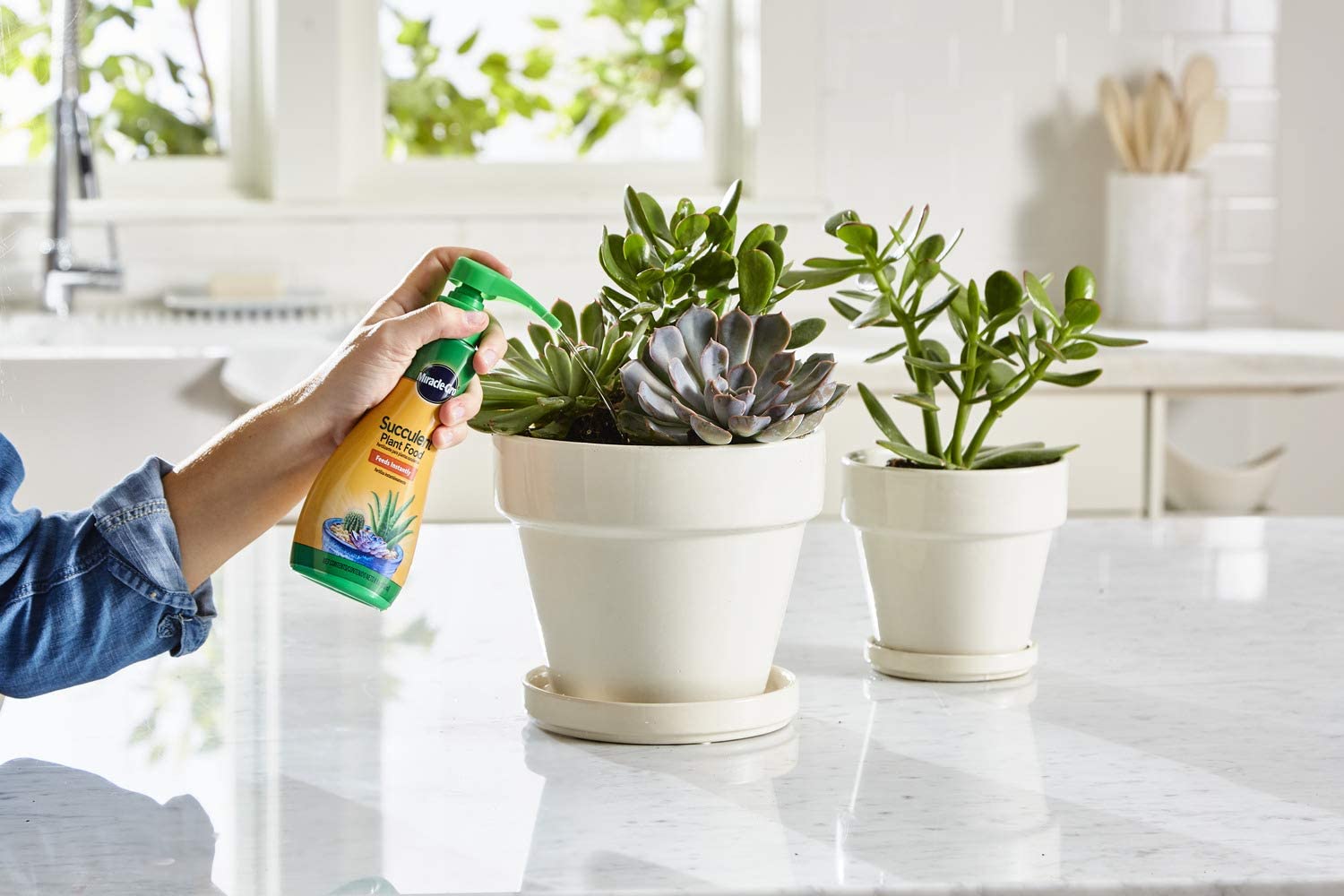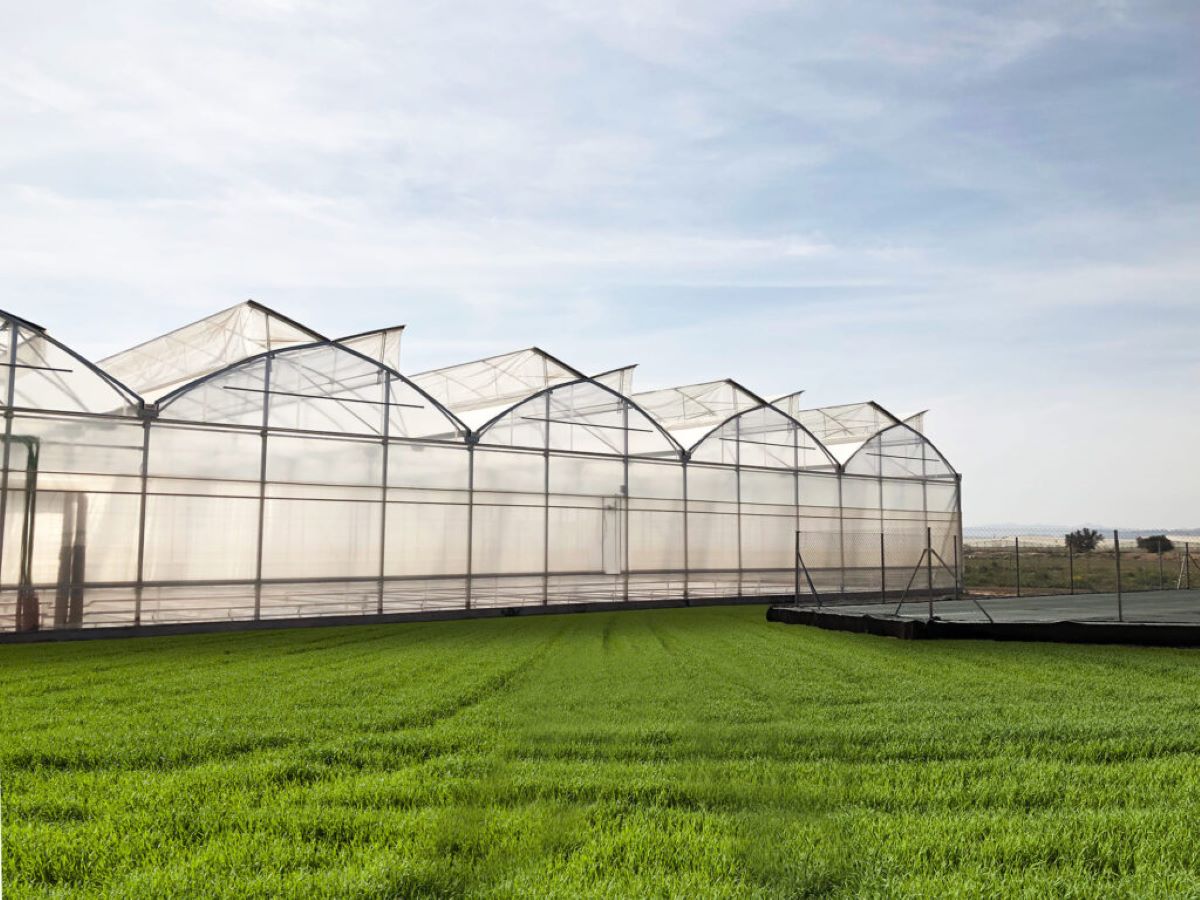Home>Types of Gardening>Ornamental Gardening>What Kind Of Fertilizer For Succulents


Ornamental Gardening
What Kind Of Fertilizer For Succulents
Modified: February 9, 2024
Looking for the best fertilizer for your succulents? Discover the essentials of ornamental gardening and find out which fertilizer is ideal for your succulent plants.
(Many of the links in this article redirect to a specific reviewed product. Your purchase of these products through affiliate links helps to generate commission for Chicagolandgardening.com, at no extra cost. Learn more)
Table of Contents
- Introduction
- Understanding Succulents
- The Importance of Fertilizing Succulents
- Types of Fertilizers for Succulents
- Organic Fertilizers for Succulents
- Inorganic Fertilizers for Succulents
- Homemade Fertilizer Recipes for Succulents
- Best Practices for Fertilizing Succulents
- Mistakes to Avoid When Fertilizing Succulents
- Frequently Asked Questions (FAQs)
- Conclusion
Introduction
Welcome to the world of ornamental gardening! Whether you’re an experienced gardener or just starting out, there’s something truly magical about cultivating and caring for plants. One particular area of ornamental gardening that has gained immense popularity is succulent cultivation. Succulents, with their unique and striking appearance, have become a favorite among gardening enthusiasts.
But how do you ensure that your succulents thrive and flourish in your garden? One key aspect of succulent care is fertilization. Fertilizing succulents provides them with the necessary nutrients to grow, develop vibrant colors, and maintain their overall health.
In this article, we will explore different types of fertilizers suitable for succulents, including organic and inorganic options. We will also provide you with tips on how to make homemade fertilizer recipes specifically tailored to suit the needs of your succulents. Finally, we will share some best practices to follow and common mistakes to avoid when fertilizing succulents.
Whether you’re a succulent enthusiast looking to enhance the beauty of your collection or a beginner eager to dive into the world of ornamental gardening, this article will equip you with the knowledge you need to successfully fertilize your succulents.
Understanding Succulents
Before delving into the world of fertilizing succulents, it’s important to have a clear understanding of what succulents are and their unique characteristics. Succulents are a group of plants that have adapted to survive in arid environments by storing water in their leaves, stems, or roots. This water storage allows them to endure long periods without rainfall, making them well-suited for dry climates.
One of the most distinctive features of succulents is their thick, fleshy leaves or stems. These structures help to store water and allow succulents to withstand drought conditions. This adaptation also gives them a unique and visually appealing appearance. From the rounded rosettes of Echeverias to the spiky forms of Agaves and Aloe vera, succulents come in a wide range of shapes, sizes, and colors.
Another interesting characteristic of succulents is their ability to propagate easily. Many succulents can be propagated from stem or leaf cuttings, making them a popular choice for avid gardeners looking to expand their collection. This ability to multiply quickly allows gardeners to experiment with different combinations and create stunning displays.
There is also a vast variety of succulents to choose from, each with its own unique growth habits and care requirements. Some popular succulent genera include Echeveria, Sedum, Crassula, Haworthia, and Kalanchoe, among many others. Understanding the specific needs of the succulent species you’re growing is crucial for their successful cultivation.
It’s important to note that while succulents are known for their ability to tolerate drought, they still require some water to thrive. Overwatering succulents can be detrimental to their health and lead to root rot. Finding the right balance and providing them with adequate water and well-draining soil is essential.
Now that you have a better understanding of succulents and their distinct characteristics, let’s explore the importance of fertilizing these fascinating plants to ensure their continued growth and vitality.
The Importance of Fertilizing Succulents
Fertilizing succulents is crucial for their overall health and the longevity of their vibrant appearance. While succulents are known for their ability to store water, they still require essential nutrients to thrive. The nutrients present in the soil can become depleted over time, especially in container gardens or when succulents are grown in nutrient-poor soil. This is where fertilizers come into play.
Proper fertilization can provide succulents with the necessary nutrients they may be lacking in their immediate environment. These nutrients, such as nitrogen, phosphorus, and potassium, play vital roles in the growth and development of succulents. Nitrogen promotes leaf and stem growth, phosphorus supports root development, and potassium contributes to overall plant health and disease resistance.
By fertilizing your succulents, you can promote healthy growth, encourage the production of new leaves and flowers, and intensify their vibrant colors. Fertilizers also play a crucial role in replenishing essential nutrients that may have been depleted by regular watering or poor soil quality.
However, it is important to strike the right balance when fertilizing succulents. Over-fertilization can lead to excessive growth, weak stems, or burnt roots. On the other hand, under-fertilization can result in stunted growth, pale coloring, and overall poor plant health.
Understanding the specific nutritional requirements of your succulents is key to providing them with the appropriate fertilizer. Different species and varieties of succulents may have varying nutrient preferences. Some succulents thrive with moderate fertilization, while others may require a more restrained approach.
Furthermore, the frequency and timing of fertilization can also impact the health of your succulents. Most succulents benefit from fertilization during their active growth period, which typically occurs in spring and summer. It’s important to note that fertilizing during the dormant winter period may not yield the desired results and can even be harmful to the plant.
Now that we understand the importance of fertilizing succulents, let’s explore the different types of fertilizers that can be used to meet the specific needs of these remarkable plants.
Types of Fertilizers for Succulents
When it comes to fertilizing succulents, there are various types of fertilizers to choose from. The two primary categories are organic fertilizers and inorganic fertilizers. Each type has its own advantages and considerations, so it’s essential to understand the differences to make an informed decision for your succulents.
Organic Fertilizers: Organic fertilizers are derived from natural sources and contain plant or animal-based materials. They release nutrients slowly over time as they break down, providing a gradual and gentle feeding for succulents. This slow-release nature reduces the risk of over-fertilization and allows for long-lasting nourishment.
Common examples of organic fertilizers for succulents include compost, worm castings, well-rotted manure, and organic liquid fertilizers. These natural fertilizers not only provide essential nutrients but also improve soil structure and promote overall soil health. They are environmentally friendly and help maintain a thriving ecosystem in your garden.
Inorganic Fertilizers: Inorganic fertilizers, also known as synthetic or chemical fertilizers, are manufactured using synthetic ingredients. They are formulated to deliver nutrients quickly and are readily available to the plants. Inorganic fertilizers typically come in granular or water-soluble forms.
Granular fertilizers are applied to the soil and slowly dissolve over time, releasing the nutrients. Water-soluble fertilizers are mixed with water and applied directly to the soil or as foliar sprays. These types of fertilizers provide an immediate nutrient boost to succulents.
When choosing an inorganic fertilizer for your succulents, it’s important to select one specifically formulated for their needs. Look for a balanced fertilizer with a ratio of nitrogen (N), phosphorus (P), and potassium (K), such as a 10-10-10 or 20-20-20 formulation. Additionally, be cautious not to apply these fertilizers excessively, as it can lead to salt build-up in the soil.
Ultimately, the choice between organic and inorganic fertilizers depends on personal preference, gardening practices, and the specific needs of your succulents. Some gardeners prefer the slow-release and natural benefits of organic fertilizers, while others find the convenience and rapid results of inorganic fertilizers more suitable for their gardening needs.
Now that we have explored the types of fertilizers available for succulents, let’s dive deeper into specific examples of organic and inorganic fertilizers, as well as homemade fertilizer recipes you can try in your garden.
Organic Fertilizers for Succulents
Organic fertilizers are an excellent choice for those looking to provide slow-release and natural nourishment to their succulents. These fertilizers are derived from natural sources and are environmentally friendly. They not only provide essential nutrients but also improve soil structure and promote overall soil health. Here are some examples of organic fertilizers that are particularly beneficial for succulents:
Compost: Compost is an excellent organic fertilizer for succulents. It is created by decomposing organic materials such as kitchen scraps, yard waste, and leaf litter. Compost enriches the soil with nutrients and improves its ability to retain moisture. You can mix compost into the soil before planting or as a top dressing around established succulents.
Worm Castings: Worm castings, also known as vermicompost, are rich in nutrients and beneficial microorganisms. They provide a slow-release source of nutrients, improve soil structure, and enhance water retention. Worm castings can be applied as a top dressing around succulents or mixed into the soil.
Well-Rotted Manure: Well-rotted manure, such as cow or horse manure that has been aged and decomposed, is another excellent organic fertilizer option for succulents. It adds organic matter to the soil, enhances nutrient content, and improves soil structure. Ensure that the manure is well-rotted to avoid burning the succulent roots.
Organic Liquid Fertilizers: Liquid fertilizers made from organic materials, such as seaweed or fish emulsion, are convenient options for succulents. These fertilizers can be diluted in water and applied directly to the soil or used as foliar sprays. They provide a quick boost of nutrients and are easily absorbed by the plants.
When using organic fertilizers, it’s important to follow the manufacturer’s instructions for application rates and frequency. Avoid over-fertilization, as it can lead to nutrient imbalances or salt build-up in the soil. Monitor your succulents closely to determine their specific needs and adjust the fertilization accordingly.
By incorporating organic fertilizers into your succulent care routine, you can provide a natural and long-lasting source of nourishment, contributing to the overall health and vitality of your plants.
Next, we will explore inorganic fertilizers suitable for succulents, providing you with more options to consider for your gardening needs.
Inorganic Fertilizers for Succulents
Inorganic fertilizers, also known as synthetic or chemical fertilizers, are an option to consider when fertilizing your succulents. These fertilizers are manufactured using synthetic ingredients and typically provide a quick and readily available source of nutrients. Here are some examples of inorganic fertilizers commonly used for succulents:
Granular Fertilizers: Granular fertilizers are solid particles that are applied to the soil around succulents. They dissolve gradually over time, releasing nutrients into the soil. Look for a balanced formulation with a ratio of nitrogen (N), phosphorus (P), and potassium (K), such as a 10-10-10 or 20-20-20 fertilizer. Apply granular fertilizers according to the package instructions, taking care to avoid direct contact with the succulent foliage, as it can cause burns.
Water-Soluble Fertilizers: Water-soluble fertilizers come in powdered or liquid form and are mixed with water before application. This type of fertilizer provides immediate nutrients to the plants as the solution is absorbed through the soil or applied as a foliar spray. Follow the instructions provided by the manufacturer to ensure proper dilution and application rates.
Slow-Release Fertilizers: Slow-release fertilizers are granular or pelletized formulations that release nutrients gradually over an extended period. These fertilizers are typically applied once every few months, reducing the need for frequent application. Slow-release fertilizers are available in both organic and inorganic forms. Select a formulation suitable for succulents and follow the package instructions for proper application.
When using inorganic fertilizers, it’s important to be cautious and apply them according to the recommended rates. Over-fertilization can lead to salt build-up in the soil, which can be harmful to succulents. Additionally, monitor your plants closely for any signs of nutrient deficiencies or excesses and adjust the fertilization accordingly.
While inorganic fertilizers provide a quick nutrient boost for your succulents, it’s important to balance their use with other practices that promote soil health, such as using organic matter and maintaining proper watering habits. This will ensure that your succulents receive a well-rounded and balanced supply of nutrients for optimal growth and health.
Now that we’ve explored both organic and inorganic fertilizers for succulents, let’s move on to homemade fertilizer recipes that you can easily prepare at home to meet the specific needs of your succulent collection.
Homemade Fertilizer Recipes for Succulents
If you prefer a more hands-on approach or want to avoid using commercially prepared fertilizers, you can create homemade fertilizers for your succulents using common household ingredients. These homemade fertilizers can be tailored to suit the specific needs of your succulent plants. Here are a few simple and effective recipes:
Eggshell Tea: Eggshells are a great source of calcium, which can benefit succulents. Rinse and collect eggshells, then crush them into small pieces. Place the crushed eggshells in a jar and fill it with water. Allow the eggshells to soak in the water for several days, occasionally stirring the mixture. This will create an eggshell tea that you can use to water your succulents. The nutrients from the eggshells will gradually leach into the water, providing a calcium-rich fertilizer.
Banana Peel Tea: Banana peels are rich in potassium and other essential nutrients that can promote flowering and overall plant health in succulents. Collect banana peels and place them in a jar. Fill the jar with water and let it sit for a few days, allowing the nutrients to infuse into the water. Use this banana peel tea to water your succulents, providing them with a boost of potassium.
Coffee Grounds: Coffee grounds are a great source of nitrogen and can be used as a fertilizer for succulents. After brewing your coffee, spread the coffee grounds on a baking sheet and allow them to dry. Once dry, sprinkle the coffee grounds around the base of your succulents, then water as usual. The coffee grounds will release nitrogen slowly, providing a nutrient boost to your plants.
Seaweed Solution: If you have access to seaweed or seaweed-based products, you can create a nutritious fertilizer for your succulents. Thoroughly rinse the seaweed to remove excess salt, then soak it in water for a few days. The water will turn into a nutrient-rich seaweed solution. Dilute this solution with water and use it to water your succulents. Seaweed contains trace elements and minerals that can benefit succulent growth and health.
Remember to use these homemade fertilizers sparingly and in moderation. It’s important not to over-fertilize your succulents, as this can lead to nutrient imbalances and plant stress. Monitor your plants closely and adjust the frequency and concentration of the homemade fertilizers as needed.
Now that you have some homemade fertilizer recipes at your disposal, let’s explore some best practices for fertilizing succulents to ensure optimal results.
Best Practices for Fertilizing Succulents
When it comes to fertilizing succulents, there are several best practices to keep in mind to ensure the optimal growth and health of your plants. By following these guidelines, you can provide your succulents with the nutrients they need while avoiding common pitfalls.
1. Follow a Regular Fertilization Schedule: Establish a regular fertilization schedule for your succulents. Most succulents benefit from fertilization during their active growth period, which typically occurs in spring and summer. Avoid fertilizing during the dormant winter period, as succulents typically do not require as many nutrients during this time.
2. Dilute Fertilizers Properly: Whether you are using organic or inorganic fertilizers, it’s essential to follow the instructions for dilution rates. Avoid using concentrated solutions, as they can be too potent for succulents and lead to fertilizer burn. Properly diluting the fertilizers ensures a balanced and safe nutrient supply.
3. Apply Fertilizers to Moist Soil: Before applying fertilizers, water your succulents lightly to moisten the soil. This will help ensure that the nutrients in the fertilizer are evenly distributed and absorbed by the plants. Avoid applying fertilizers to dry soil, as it can lead to concentration imbalances or nutrient burn.
4. Apply Fertilizers to the Base of the Plants: When applying fertilizers, focus on applying them to the base of the plants, avoiding direct contact with the leaves or stems. This helps prevent fertilizer burn and minimizes the risk of fungal diseases. Water the plants after fertilization to ensure proper nutrient uptake.
5. Monitor Plant Response: Keep a close eye on your succulents after fertilization. Observe how they respond to the fertilizers and monitor for any signs of nutrient deficiencies or excesses. Adjust the fertilization frequency or concentration as needed to provide the appropriate nutrition for your succulents.
6. Maintain Proper Watering Habits: While fertilizing is important, it should not replace proper watering practices. Succulents still need adequate water to thrive, and overwatering can be detrimental to their health. Balance your watering and fertilizing routines to ensure your succulents receive the right amount of water and nutrients.
7. Consider Seasonal Variations: Succulents may have different nutritional requirements throughout the year. For example, they may require less fertilization during the dormant period and increased feeding during active growth phases. Take into account the specific needs and growth patterns of your succulents when determining the fertilization frequency and type.
By following these best practices, you can provide your succulents with the right amount of nutrients at the right time, promoting their overall health, growth, and stunning appearance.
Now, let’s explore some common mistakes to avoid when fertilizing succulents to ensure their well-being.
Mistakes to Avoid When Fertilizing Succulents
While fertilizing your succulents is important for their health and vitality, it’s essential to be mindful of potential mistakes that can have negative consequences. Avoiding these common pitfalls will help ensure the well-being of your succulents and prevent any potential harm.
1. Over-Fertilizing: One of the most common mistakes is over-fertilizing succulents. Applying too much fertilizer or fertilizing too frequently can lead to excessive growth, weak stems, or burnt roots. It’s important to follow the recommended dilution rates and fertilization schedules to prevent nutrient imbalances and issues caused by over-feeding.
2. Using Incorrect Fertilizer Ratios: Succulents have specific nutritional needs, and using the wrong fertilizer ratios can be detrimental to their health. Avoid using high-nitrogen fertilizers intended for rapid leafy growth, as this can lead to weak and stretched plants. Look for balanced fertilizers with a ratio of nitrogen (N), phosphorus (P), and potassium (K) specifically formulated for succulents.
3. Applying Fertilizers to Dry Soil: Fertilizers should be applied to moist soil to ensure proper nutrient distribution and absorption. Applying fertilizers to dry soil can result in concentrated pockets of nutrients, which can lead to nutrient burn or imbalances. Water your succulents lightly before fertilizing to ensure even nutrient uptake.
4. Neglecting Soil Drainage: Succulents thrive in well-draining soil, and fertilizing without proper drainage can cause root rot. Ensure that the soil has adequate drainage, either by using a well-draining potting mix or amending your garden soil with materials such as perlite or sand. Excess water should be able to drain freely to prevent waterlogging and subsequent root issues.
5. Fertilizing During Dormant Periods: Succulents have specific growth patterns, and fertilizing during dormancy may not yield the desired results. During the dormant period, succulents require less nutrient supplementation as their growth slows down. It’s best to focus on fertilization during the active growth phases and reduce or stop fertilizing during the winter or dormant period.
6. Overlooking Signs of Nutrient Deficiency or Excess: It’s important to pay attention to your succulents and monitor them closely for any signs of nutrient deficiencies or excesses. Nutrient deficiencies can manifest as pale or discolored leaves, stunted growth, or decreased vigor. Conversely, nutrient excesses can appear as burnt leaf tips, distorted growth, or wilting. Adjust your fertilization practices accordingly to address any nutrient imbalances.
7. Ignoring Individual Succulent Needs: Each succulent species and variety may have specific requirements, including their nutritional needs. It’s crucial to research and understand the specific needs of the succulents you are growing and tailor your fertilization approach accordingly. Some succulents may require more frequent feeding, while others may thrive with less fertilizer.
By avoiding these common mistakes, you can ensure that your succulents receive the right amount of nutrients at the appropriate time, promoting their overall health and longevity.
Next, let’s address some frequently asked questions about fertilizing succulents to further enhance your understanding of this topic.
Frequently Asked Questions (FAQs)
Q: How often should I fertilize my succulents?
A: Succulents generally benefit from fertilization during their active growth period, which is typically in spring and summer. It’s best to follow a regular fertilization schedule, applying the recommended dilution rates according to the type of fertilizer you are using. Avoid fertilizing during the dormant winter period when succulents are not actively growing.
Q: Can I use general-purpose fertilizers for my succulents?
A: While general-purpose fertilizers can be used for succulents, it’s important to ensure that the fertilizer has a balanced nutrient ratio suitable for these plants. Look for fertilizers with a ratio of nitrogen (N), phosphorus (P), and potassium (K) specifically formulated for succulents. These ratios will support the overall health and growth of your succulents.
Q: Is it necessary to dilute liquid fertilizers?
A: Yes, it is essential to dilute liquid fertilizers according to the manufacturer’s instructions. Concentrated liquid fertilizers can be too potent for succulents and may lead to nutrient burn. Proper dilution ensures a balanced and safe nutrient supply for your plants.
Q: Are there any specific nutrients that succulents need?
A: Succulents require a balanced supply of nutrients, including nitrogen (N), phosphorus (P), and potassium (K), often represented as N-P-K ratios on fertilizer labels. Nitrogen supports leaf and stem growth, phosphorus promotes root development, and potassium contributes to overall plant health and disease resistance. Additionally, succulents may benefit from trace elements such as iron, magnesium, and calcium.
Q: Can I use homemade fertilizers exclusively for my succulents?
A: While homemade fertilizers can provide some nutrients for succulents, they may not provide a complete and balanced spectrum of essential nutrients. It’s recommended to incorporate a combination of homemade and commercially prepared fertilizers for a well-rounded nutritional supply. This ensures that your succulents receive all the necessary elements for optimal growth and health.
Q: What are the signs of over-fertilization in succulents?
A: Over-fertilization in succulents can manifest in several ways. Signs of over-fertilization may include leaf burn or discoloration, weak and stretched growth, or an accumulation of salt deposits on the soil surface. If you notice any of these signs, it’s best to reduce or halt fertilization and flush the soil with water to remove excess salts.
Q: Can I use slow-release fertilizers for my succulents?
A: Yes, slow-release fertilizers can be used for succulents. Look for formulations specifically designed for succulents and follow the package instructions for proper application rates. Slow-release fertilizers provide a gradual and continuous nutrient supply, reducing the need for frequent fertilizing.
Q: Can I use fertilizers during the winter for indoor succulents?
A: For indoor succulents experiencing a winter dormancy period, fertilization is generally not necessary. Succulents tend to have reduced growth during this time and require less supplementation. It’s best to resume fertilizing in spring when the plants begin their active growth phase.
These FAQs should provide you with additional insight into fertilizing succulents. Remember, it’s important to adapt your approach based on the specific needs of your succulents and monitor their response to fertilization.
Now, let’s summarize the key points we’ve covered in this article to help you successfully care for your succulents.
Conclusion
Congratulations! You now have a deeper understanding of fertilizing succulents and how to provide them with the nutrients they need to thrive. Whether you choose organic or inorganic fertilizers, or even opt for homemade options, remember to fertilize your succulents during their active growth period and follow recommended dilution rates. Striking a balance between watering and fertilizing is crucial to prevent nutrient imbalances and keep your succulents healthy.
When choosing fertilizers, consider the specific needs of your succulent species and adjust your fertilization approach accordingly. Organic fertilizers, such as compost, worm castings, and organic liquid fertilizers, provide gradual nourishment and enhance soil health. Inorganic fertilizers, like granular or water-soluble formulations, offer quick nutrient availability.
Avoid common mistakes such as over-fertilizing, using incorrect fertilizer ratios, applying fertilizers to dry soil, or neglecting the signs of nutrient deficiencies or excesses. Additionally, be mindful of individual succulent requirements, follow a regular fertilization schedule, and maintain proper watering habits to ensure success in your gardening endeavors.
By implementing these best practices, you can ensure that your succulents will continue to flourish, displaying their unique beauty and vibrancy. Experiment, observe, and adapt your fertilization routine as needed to meet the specific needs of your succulent collection.
So go ahead, fertilize your succulents with confidence, and enjoy the rewards of stunning and thriving plants!






